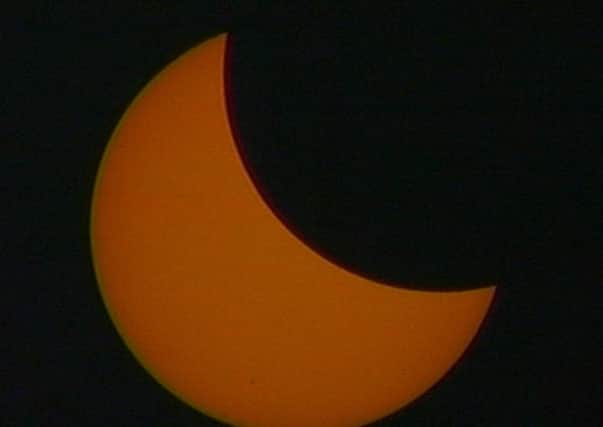Giant asteroid, green comet Lovejoy and partial solar eclipse - three heavenly spectacles to enjoy


And that’s just for starters. Skywatchers are also to be treated to a comet with a green glow and a partial solar eclipse.
The huge asteroid, called 2004 BL86 by astronomers, will sweep safely past Earth on January 26.
Advertisement
Hide AdAdvertisement
Hide AdA spokesman for Nasa said: “It will be the closest asteroid 2004 BL86 will get to Earth for at least the next 200 years.
“And while it poses no threat to Earth for the foreseeable future, it’s a relatively close approach by a relatively large asteroid, so it provides us a unique opportunity to observe and learn more.”
Amateur astronomers with small telescopes and strong binoculars should be able to see the asteroid from the evening of January 26 into the morning of January 27.
The asteroid will whizz past in front of the constellations Hydra, Cancer and Leo.
Advertisement
Hide AdAdvertisement
Hide AdThe asteroid, which is about a third of a mile wide, will pass about 745,000 miles from the Earth’s surface. For comparison, the moon is about 240,000 miles from Earth.
The flyby is notable because 2004 BL86 will be the closest of any known space rock this large until asteroid 1999 AN10 flies past Earth in 2027.
The giant asteroid is not the only rare phenomenon to be witnessed from the UK and Ireland in forthcoming weeks.
Comet Lovejoy can currently be seen in the night sky. And, a partial solar eclipse will be visible from Ireland in March.
Advertisement
Hide AdAdvertisement
Hide AdTo the naked eye Comet Lovejoy will appear as a small grey smudge without the glowing trail.
If you have a small telescope or binoculars you may be able to spot Lovejoy as a glowing green ball.
It last passed through our solar system 11,500 years ago. Astronomy Now has a helpful viewing chart on the internet.
A total solar eclipse on March 20 will be visible from Svalbard and Faroe Islands. The eclipse will be partial for people in Iceland, Europe, northern and eastern Asia and northern and western Africa. The partial eclipse as seen from Ireland should still provide wonderful viewing; the Moon covers a large portion of the Sun, so this is still a spectacular sight.
Advertisement
Hide AdAdvertisement
Hide AdViewing from Dublin, the Moon will first touch the edge of the Sun at 08:24 on March 20. It will be closest to the centre of the Sun at 9.29am, and then leave the Sun’s edge at 10:37am, to bring the heavenly spectacle to an end.